I spent just over three weeks living with the OneOdio A70 headphones. From early morning editing in Reaper and quiet calls on Discord, to late-night Soulsborne runs and casual Spotify sessions while commuting, they followed me into nearly every corner of daily use. I also paired them with an old-school Denon turntable just to see how the drivers would handle a little vinyl warmth.
After all that, I walked away with a clear picture of what these cans do well, where they slip up, and whether they’re worth adding to your short list if you’re after a budget pair of Bluetooth over-ear headphones that don’t cut corners on the basics.
Unboxing and First Impressions
The OneOdio Fusion A70 Bluetooth headphones come in a tidy, minimalist box. Inside, you’ll find the headset folded inward, a thick coiled DJ cable (3.5 mm to 6.35 mm), a straight mic-enabled 3.5 mm cable, a USB-C charging cable, a cloth pouch, and a small printed user manual. No foam, no fancy inserts, and no QR code to download yet another companion app—because there isn’t one. These are plug-and-play by design.
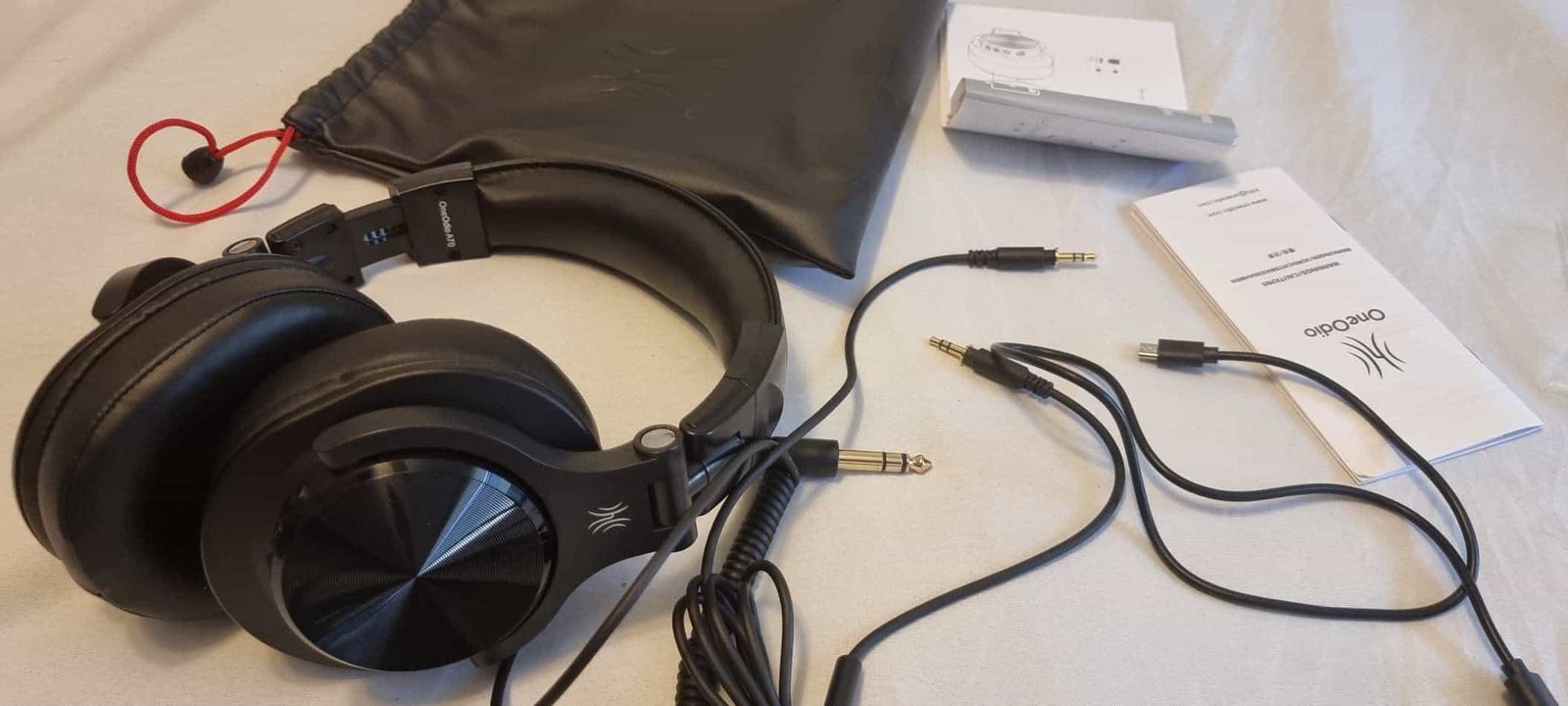
Lifting the A70 out of the box, I noticed the build felt more substantial than the price would suggest. The earcups are matte plastic with brushed rings around the edge that avoid fingerprints. Metal sliders in the headband give it some reassuring resistance when adjusting size. The hinges feel stable and allow the cups to both fold and rotate flat for travel. A Reddit user phrased it best:
“They look like Beats, flex like old Sennheisers, and cost less than a week’s groceries.”
— u/hollowtone, Reddit review thread
No creaks, no wiggle, and no visual branding overload. These feel made to work, not to impress strangers on the train.
Design and Build Quality
OneOdio leans into utility with this one. The Fusion A70 doesn’t try to look flashy, but it also avoids looking cheap. Every adjustment point is reinforced, from the folding hinges to the headband sliders. After two weeks of coffee-hair mornings and hoodie-over-head sessions, the sliders held their place every time. No drift, no slouch.
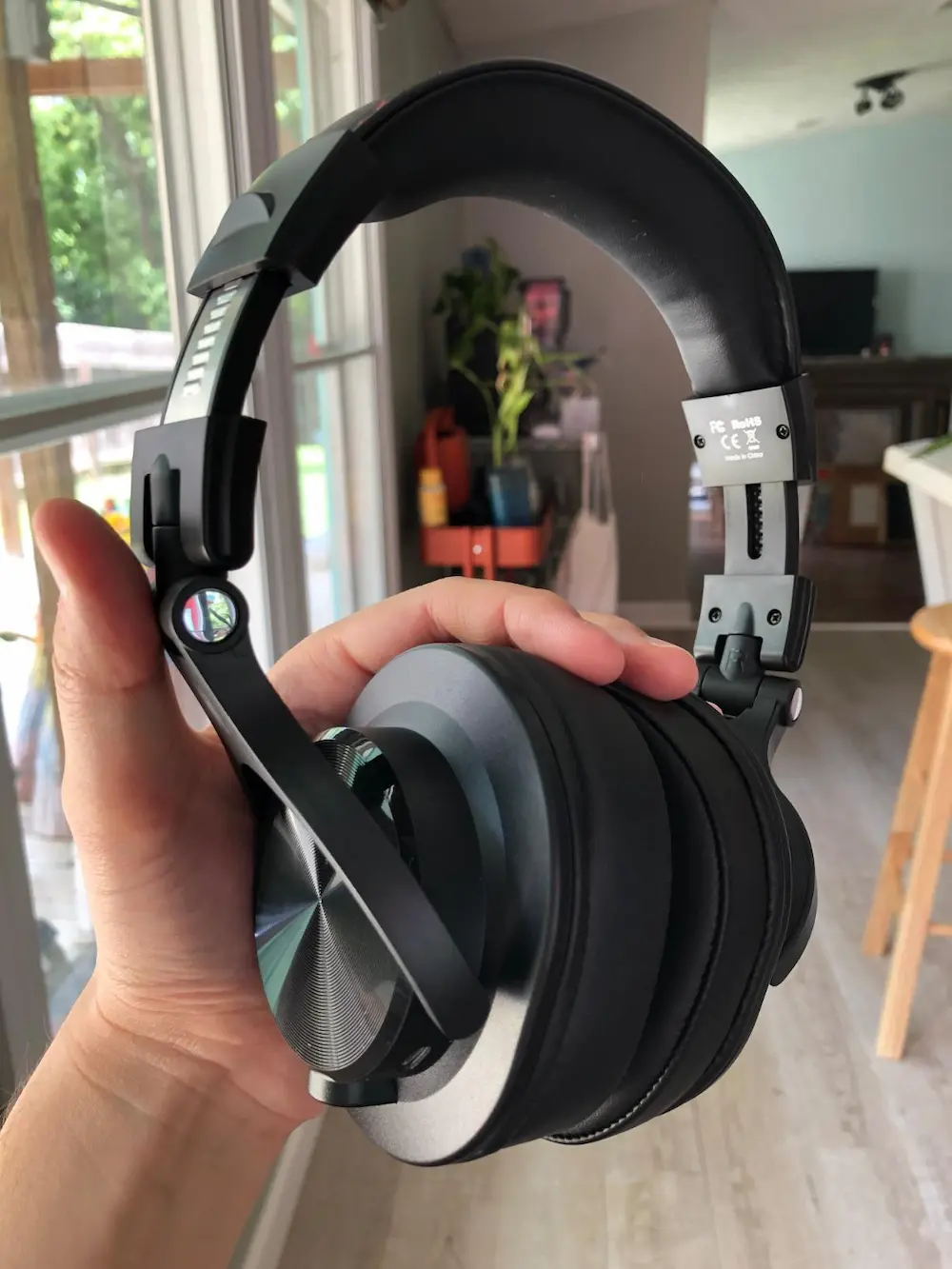
The earcups rotate just enough to conform to different jawlines and help maintain a good seal, which is crucial for comfort and sound isolation. Stitching on the earpads runs along the outer edge, which prevents rubbing or skin irritation during longer sessions. Internally, the drivers sit behind a fine fabric that never touched my ears, even during four-hour stretches.
Build-wise, the A70 shares its frame with the OneOdio A71, the wired-only version that targets studio users. That’s not just a guess—OneOdio’s own spec sheets confirm it. This reuse of a proven shell explains the tight tolerances and surprisingly stable feel for what’s often seen as an entry-level headset.
Comfort Over Marathon Sessions
The oval ear cushions are made from slow-rebound memory foam and wrapped in synthetic leather. The clamp force is firm enough to keep the seal but soft enough that my glasses arms never dug into my skull. I wore the A70 through an afternoon of podcast editing in Reaper and then rolled straight into two hours of FLAC listening from my MacBook Pro. My ears never touched the driver mesh, and I only lifted the cups once to cool things down briefly.
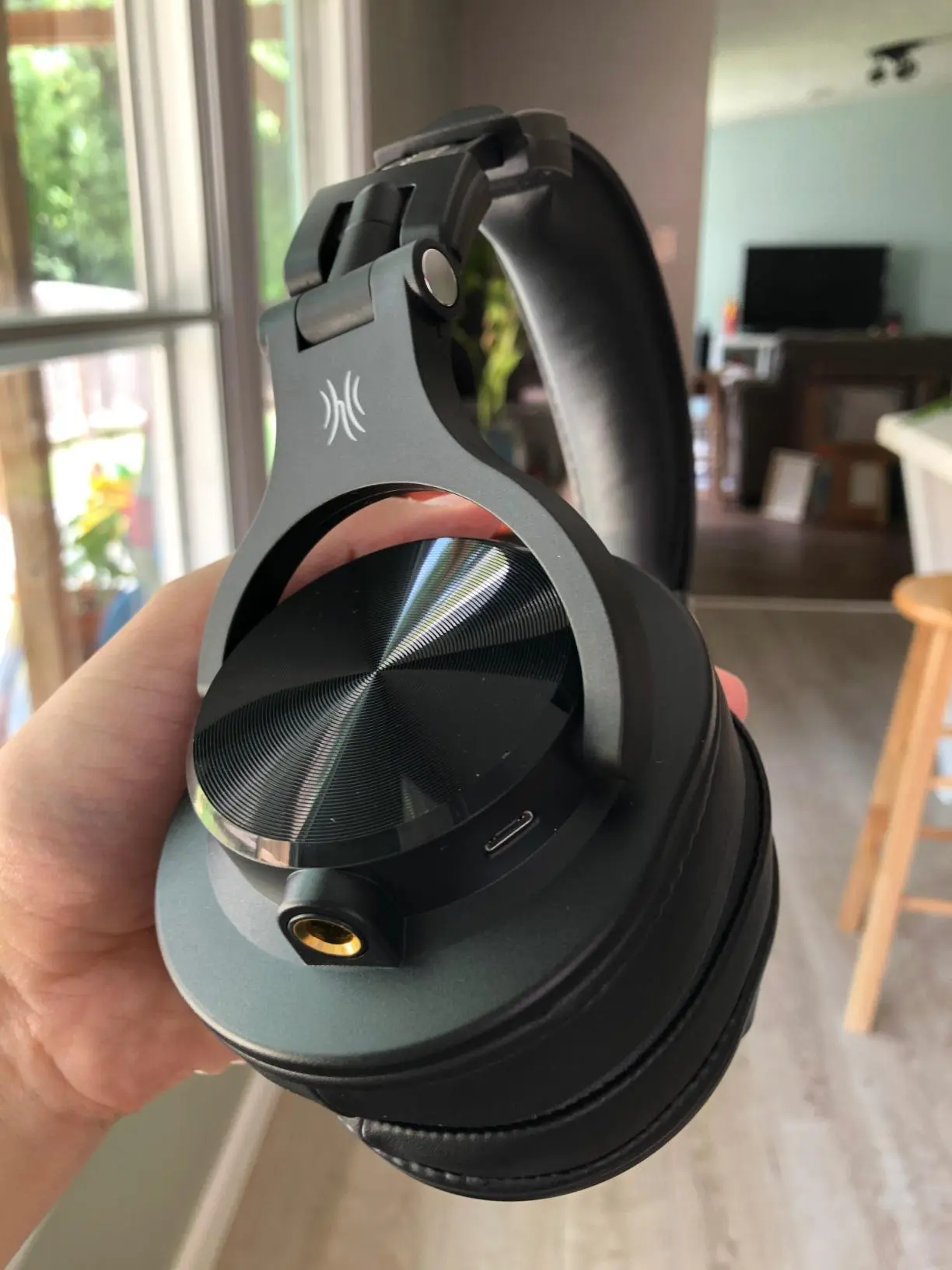
My partner, who has a narrower head and wears lighter prescription frames, took them for a two-hour Netflix session and reported zero hotspots or pressure fatigue. Even on the smallest notch, the headband didn’t feel loose, though I’d say these are more tailored toward medium to large head sizes.
Heat does build up after about ninety minutes, which is expected with closed-back leather-style pads, but it never got unmanageable. A quick thirty-second lift was enough to reset the temperature and keep going.
Controls, Indicators, and Reset Function
All control buttons sit on the left earcup. There’s a power/multi-function button, separate volume up and down buttons, a USB-C port, and a 3.5 mm jack. The layout is easy to memorize and spaced out well enough to find by touch. A long press on the main button powers the headset on or off. The OneOdio A70 user manual explains this in basic terms, but it really is intuitive.
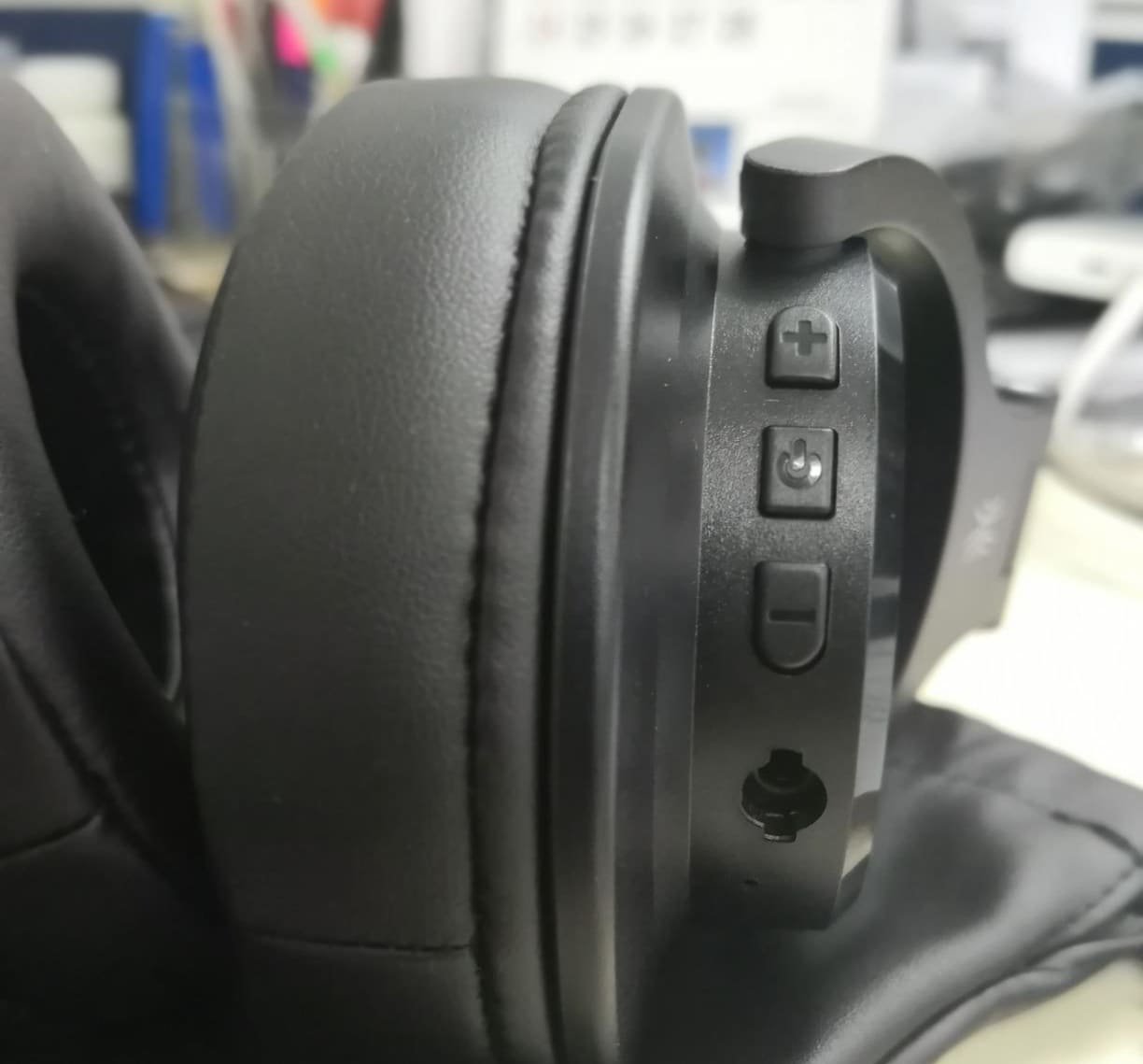
Bluetooth pairing kicks in automatically when the headset is turned on for the first time. The blue light flashing indicates pairing mode, and once connected, the LED turns solid. The only issue I had was a random instance where the headset wouldn’t power off properly. I held the button, but the light stayed on and the headset wouldn’t disconnect. I had to perform a OneOdio A70 reset by holding the power and volume up buttons together for five seconds.
“Mine got stuck once on a blue flashing light and wouldn’t shut off until I did the reset combo. Hasn’t happened again though.”
— u/audioNomad42, Reddit comment on r/BudgetAudiophile
It only happened once, and the fix worked instantly, but it’s a known quirk worth bookmarking.
Wireless Connectivity, Range, and Latency
The OneOdio A70 Bluetooth implementation uses version 5.0. I tested it on Android, MacBook, and PS5 via aux input. Range was stable for about nine meters indoors with one wall between the source and headset. Beyond that, music started to stutter briefly. It reconnected quickly after returning to range and didn’t need to be re-paired.
Where this headset shines is in its ability to support dual input. You can have music streaming over Bluetooth while plugging in a wired device like a mixer or instrument through the 3.5 mm jack. It’s a rare feature in this price bracket and one of the reasons the A70 remains a popular pick for budget DJs and creators.
“I’ve never seen a sub-$50 headphone that lets me play Bluetooth from my phone and also monitor my mix deck wired at the same time. That’s why I sold my Pro 10.”
— u/knobtwister93, Reddit
Latency over Bluetooth was low enough that YouTube and Netflix stayed in sync. There’s no visible lag in voice chat or calls either, making it suitable for casual gaming and video playback. It’s not a gaming headset, but it doesn’t behave like a laggy budget headset either.
Battery Life and Charging
OneOdio quotes 72 hours of wireless runtime for the Fusion A70, but in regular use, I landed closer to 46. I ran a mix of music, podcasts, a few gaming nights, and about two hours of FLAC playback from a Fiio DAC via cable. Volume hovered around 65 percent. I didn’t baby the battery, and I didn’t stretch the runtime with pauses. The red LED came on during a late Zoom call, and I still had about an hour and a half left before it shut off.
Charging from flat to full on a basic 15-watt phone charger took two hours and four minutes. There’s no quick-charge mode, but a ten-minute top-up gave me just enough to finish a movie. No app, no battery voice prompts—just a red light, a micro USB port, and a consistent power draw. I would have liked USB-C here, especially since OneOdio moved to it on newer models, but at this price it’s not a dealbreaker.
Sound Performance – Music, Games, and Studio Use
Right away the A70 sounds bold, with a noticeable bump in the low end. It’s not the kind of bass that rattles teeth, but it’s tuned with fun in mind. Kick drums carry weight, sub-bass rumbles politely, and vocals still stay above the waterline. Treble isn’t harsh, though there’s a slight sparkle around cymbals and strings. Think “engaging,” not clinical.
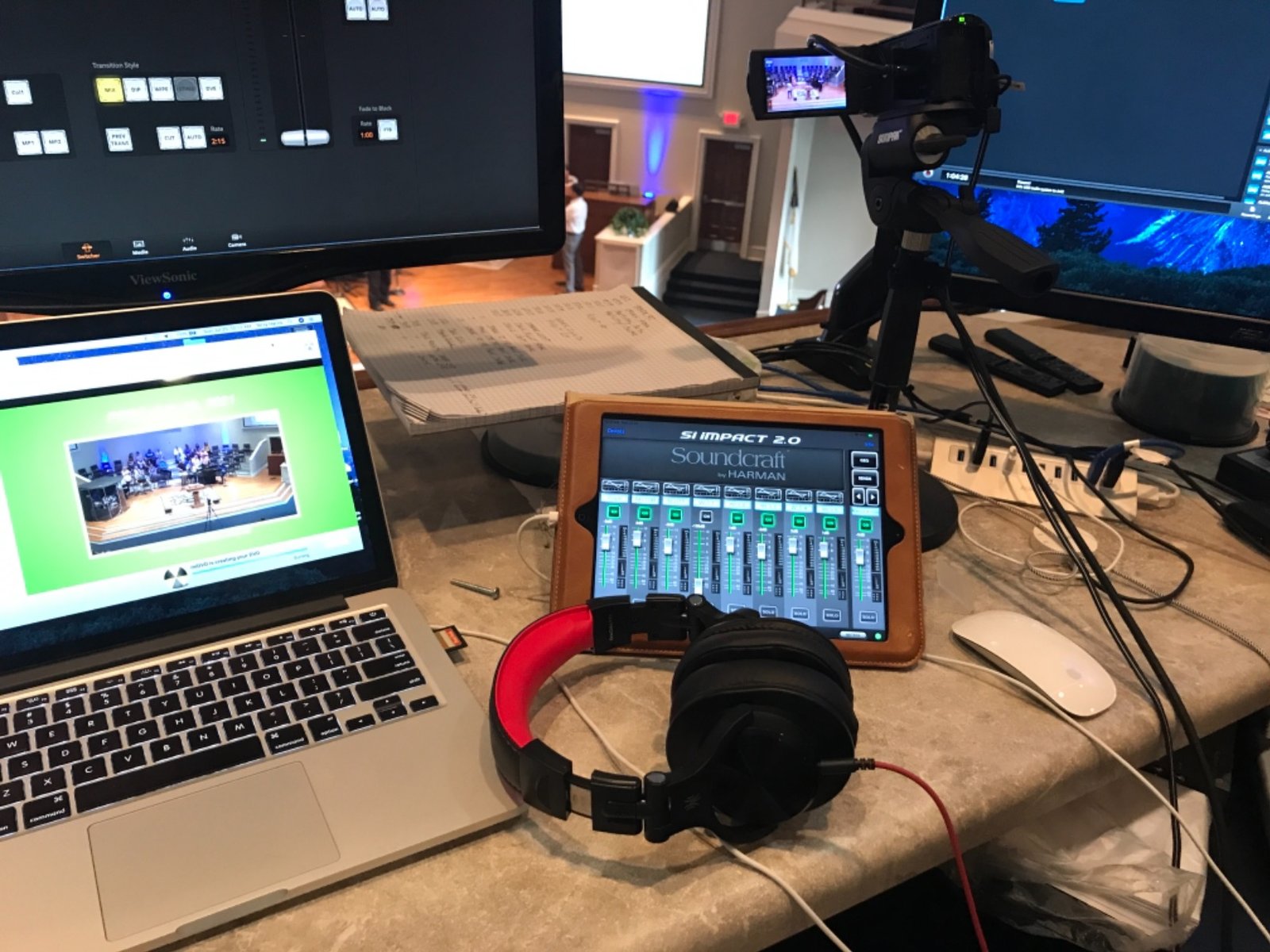
I queued up Oscar Peterson’s “You Look Good to Me” in FLAC. The upright bass had a nice woody texture, and the ride cymbal shimmered without fizzing out. On Dua Lipa’s “Love Again,” the chorus lifted cleanly and the beat had room to hit. It’s not analytical, but it’s listenable for hours.
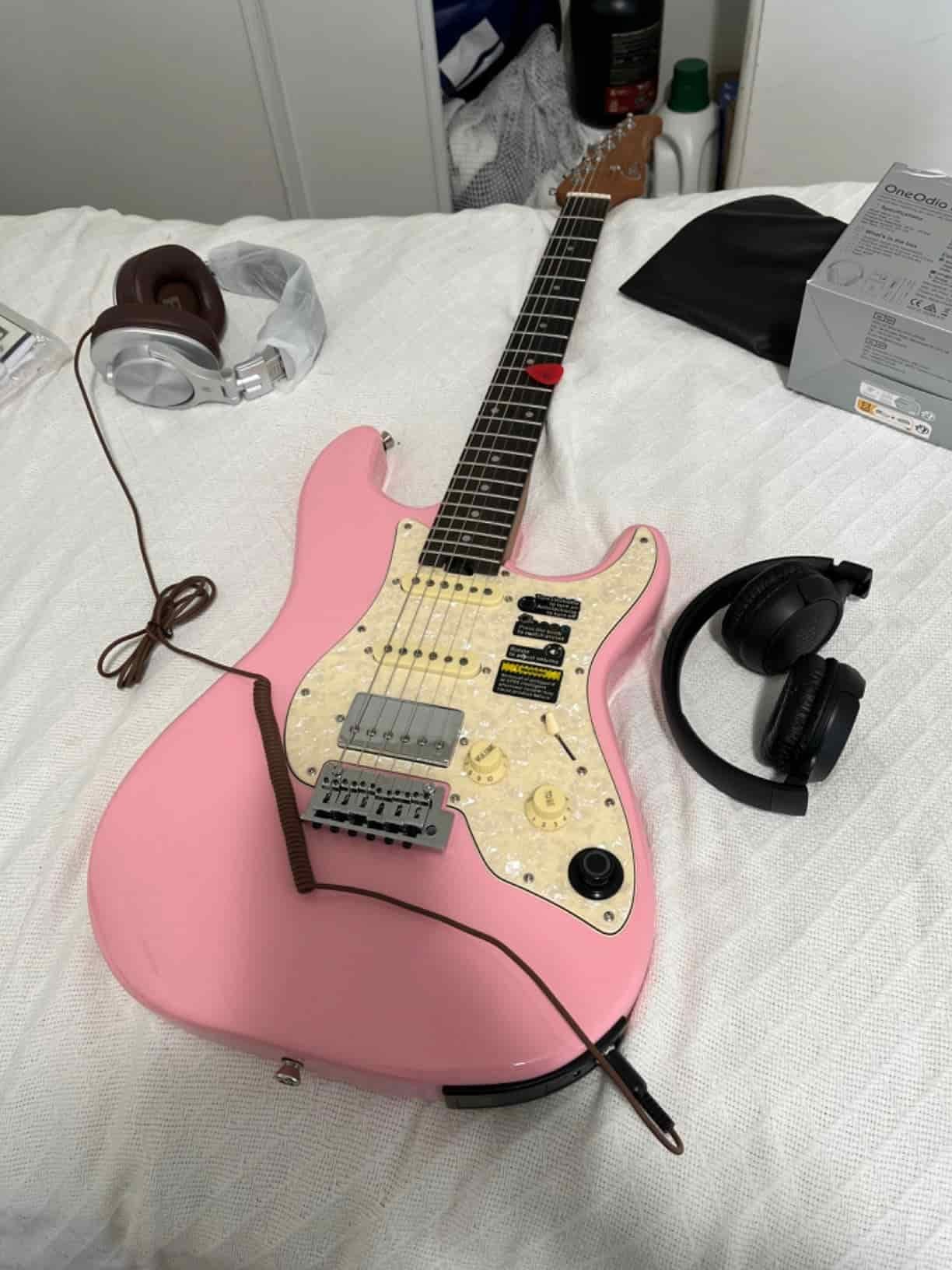
Gaming felt responsive enough for casual sessions. In Valorant, I could still pick out directional cues, though competitive players might want more separation. Bluetooth latency was low enough that lips synced in cutscenes, and I didn’t feel out of step in boss fights. Wired mode trims the bass slightly, giving more space to midrange detail. I edited a short narration piece in Audacity and preferred the wired tone for vocal work.
Microphone Quality
Calls over Bluetooth sounded fine in a quiet room. My voice came through a bit boxy but intelligible. In noisier spaces, the mic picked up a lot of background activity. Wired mode uses the inline mic, which was slightly clearer and less prone to room echo. Nobody on Discord complained either way, though one friend said I sounded a little more distant than usual.
A Reddit user put it this way:
“Good enough for Discord or class. Wouldn’t stream with it, but it’s fine for what it is.”
— u/paperhats, r/BudgetAudiophile
It’s not broadcast quality, but for Bluetooth calls, Zoom meetings, or group chat, it checks out.
OneOdio A70 vs A71
The A70 and A71 look similar on paper, but the A71 is fully wired and tuned more flat. If you’re recording vocals or mixing podcasts, the A71 has the edge. But the A70 wins on flexibility. With Bluetooth, dual inputs, and daisy-chaining, it’s a more useful everyday headset.
OneOdio A70 vs A30
The A30 adds ANC and a slicker look, but loses the A70’s analog sharing and 72-hour battery. Sound is tighter on the A30, with less low-end boost. Still, the A70 feels more open and natural for music. Unless you really need noise cancelling, the A70 offers better overall value.
OneOdio A70 vs Pro 10
The Pro 10 skips Bluetooth and leans neutral. Build and comfort are near identical. If you’re staying wired and want flatter tone, the Pro 10 makes sense. But if you want to take calls, pair to your phone, or mix sources, the A70 earns its keep.
A Quora post nailed it:
“I used the Pro 10 for months, but after switching to the A70, I never looked back. Wireless freedom changes everything.”
— user reply on “Is the OneOdio A70 worth it?”
Gaming Experience
I’ve used plenty of budget headphones over the years, and most of them have one or two compromises that keep them in the “good enough” category. The OneOdio Fusion A70 is different. It’s simple. It’s clean. It works for music, but it can handle gaming if you need it to.
There are a couple of areas where I think OneOdio could make improvements, but considering the price and that these are not made for gaming, I think they did a solid job. I tried a few rounds in CS and Warzone, and the sound was clear enough to catch footsteps and voices. The bass is there but does not cover everything else, which is good.
They are comfortable. The pads are soft, and the headband sits fine. They can get warm, but nothing too bad. They don’t clamp too hard, and they are fine with glasses. The wired connection is stable, and you can use Bluetooth if you want, but I used the cable most of the time.
The mic works. It’s not amazing, but it’s clear enough for Discord. People could hear me without issues. Battery life is long, so you don’t think about charging too often.
If you want a headset that you can use for music and gaming now and then, and you don’t want to spend too much, the OneOdio Fusion A70 is worth a look.
Final Verdict
The Fusion A70 plays above its bracket. It doesn’t have ANC, app support, or USB-C. But what it does have is reliable Bluetooth, solid wired performance, and honest audio that doesn’t tire you out. Add long battery life and daisy-chain support, and it quietly becomes the pair you reach for every day.
No gimmicks, no software layers to manage, and no learning curve. Just a headset that works, stays comfortable, and sounds better than it should at this price. That’s the kind of boring I’ll take any day.
OneOdio Fusion A70 Bluetooth & Wired Headphones
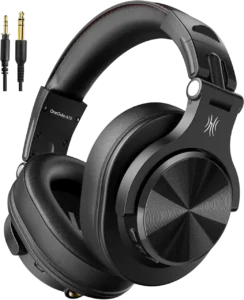
The OneOdio Fusion A70 are over-ear headphones featuring 40 mm neodymium drivers, Bluetooth 5.2 wireless connectivity, and an impressive 72 hours of playtime. Dual-mode: use them wireless or wired via 3.5mm/6.3mm jacks. Built for comfort with swiveling ear cups and a foldable design, ideal for DJs, studio monitoring, and everyday listening.
Product SKU: FUSION-A70
Product Brand: OneOdio
Product Currency: USD
Product Price: 44.99
Price Valid Until: 2030-12-31
Product In-Stock: InStock
4.4
The OneOdio Fusion A70 is available on Amazon.